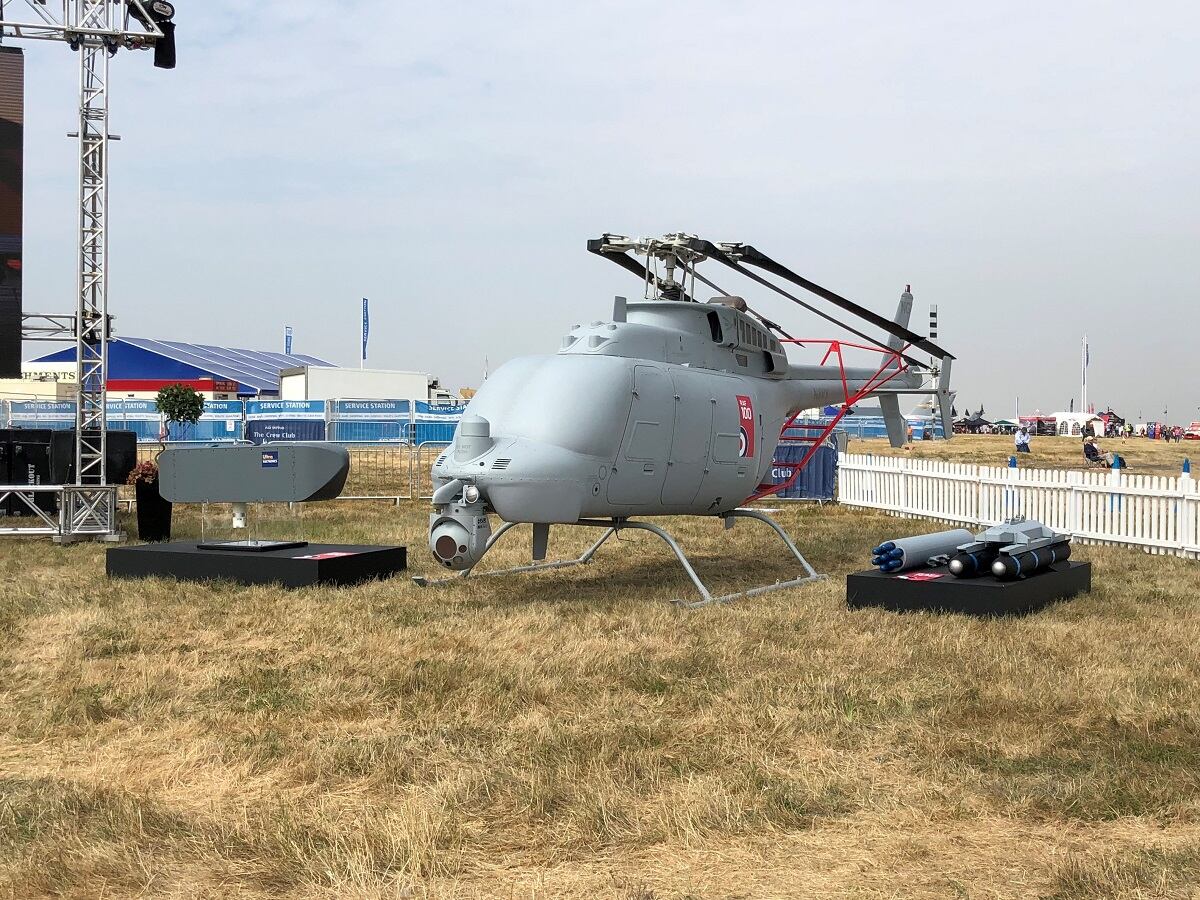LONDON — Britain’s defense secretary has named RAF Waddington in Lincolnshire, England, as the base for the Royal Air Force’s new Protector drone.
The aircraft made “aviation history” by carrying out the first trans-Atlantic flight of a UAV when it landed in the U.K. on July 11, according to manufacturer General Atomics Aeronautical Systems and the Royal Air Force.
The service’s incumbent fleet of MQ−9 Reaper UAVs that Protector will replace currently has its home base at Waddington, “continuing the foundations of flying Reaper,” he said. The Royal Air Force’s MQ−9B SkyGuardian variant is known as Protector.
Read more from Royal International Air Tattoo 2018 here!
SkyGuardian has been developed as a certifiable version of the ubiquitous Reaper UAV, designed to fly under traditional flight rules as if it were a manned platform.
However, while General Atomics may have written a small footnote in unmanned aviation history, the company’s effort to get the MQ−9B into service with the British is proving more trying.
Protector was originally slated to enter service this year but was put back to 2021. It now looks like it will be 2024 before the Reaper replacement will be fully operational.
The numbers are also changing. When Britain first announced its intention to acquire Protector in the 2015 Strategic Defence and Security Review, the numbers were put at more than 20, but for at least the moment Britain is looking at ordering an initial 16.
“The final number of Protectors we will acquire has yet to be set, but we are committed to more than doubl[ing] the existing capability provided by the fleet of 10 Reapers. Our current agreement with the U.S. government is for the initial supply of 16 air vehicles,” a Ministry of Defence spokesman said.
He added that work on the program was going well, but confirmed the program faced a delay.
RELATED

“The Protector program is progressing well and will be introduced by mid−2024, which was a change from its previous in-service date. We are simply sensibly managing a seamless transition between getting the most out of our current Reaper aircraft and moving to the cutting-edge Protector,” he said.
Additionally, in the announcement from Williamson regarding the basing of Protector at Waddington, the MoD reiterated that the introduction of the UAV will double the RAF’s Reaper capability, which stands at 10 air vehicles.
The numbers and timing could be a matter of financial re-profiling at Britain’s cash-strapped Defence Ministry.
The upcoming publication of the defense review, known as the Modernising Defence Programme, could throw more light on MoD intentions.
Certainly, as Royal Air Force chiefs at the Air Power Conference in London earlier this week made clear, information as well as command and control are at the heart of a transformation effort already underway here. That should be a sweet spot for Protector.
In written evidence to Britain’s parliamentary Defence Committee in April, General Atomics admitted that only “strictly limited progress has been made towards realizing the SDSR 2015 commitment to more than 20 Protectors in Joint Force 2025."
“Only 16 are currently being procured, and the platform will now be introduced later than originally planned,” General Atomics said.
The U.S. unmanned air vehicle specialist added that the delay is “financially driven.” It said progress had previously been affected by the “relatively cumbersome U.S. Foreign Military Sales (FMS) process."
Perhaps, unsurprisingly, General Atomics told the committee Britain should look beyond the SDSR commitment of “more than 20” for a further batch of the machines.
“Any additional Protectors to be capable of supplementing current maritime capabilities, not least the RAF’s P−8A Poseidon,” General Atomics noted. Protector is being delivered with interfaces to accommodate the size, weight and powerof the sense-and-avoid system.
General Atomics also used its written evidence to point to the lack of what it said was a key enabling capability Britain had opted not to buy for the UAV, even though the required interfaces were being fitted.
“Protector is being delivered without a Due Regard Radar, denying one of its key enabling capabilities, a sense-and-avoid system. Until such a system is integrated and operational, it will prove impossible for the RAF to realize the platform’s full potential, at least in terms of exerting global influence,” General Atomics said.
While the transit over to the U.K. from the U.S. demonstrated that the UAV is capable of flying long distances under traditional manned air traffic rulings, most of the journey was carried out over the sea, and flight overland was carried out under an overflight permission under which other air traffic effectively avoided the UAV ― certainly when flying over the U.K.
To fly over populated areas ― as is the intention of the RAF for its Protector program ― the UAV will need to be able to demonstrate safe separation from other aircraft. And if it is to fly in uncontrolled airspace, it is assumed that a sense-and-avoid system will be required.
Sources close to the program claim that developing a certifiable airframe does not necessarily translate to it carrying a sense-and-avoid system, and that extra funding will need to be committed in order to develop such a capability onboard.
As it stands, Protector is being acquired and developed under a number of different contracts ― a mix of the Foreign Military Sales and Direct Commercial Sales processes with the U.S. government and General Atomics ― and it is not as straightforward an acquisition as the parties involved may have hoped for.
There is still no production contract in place for Protector, and military sources claim this may not happen “for a number of years,” further indicating that the delivery of the UAV will be at the latter end of the “early 2020s."
Andrew Chuter is the United Kingdom correspondent for Defense News.








